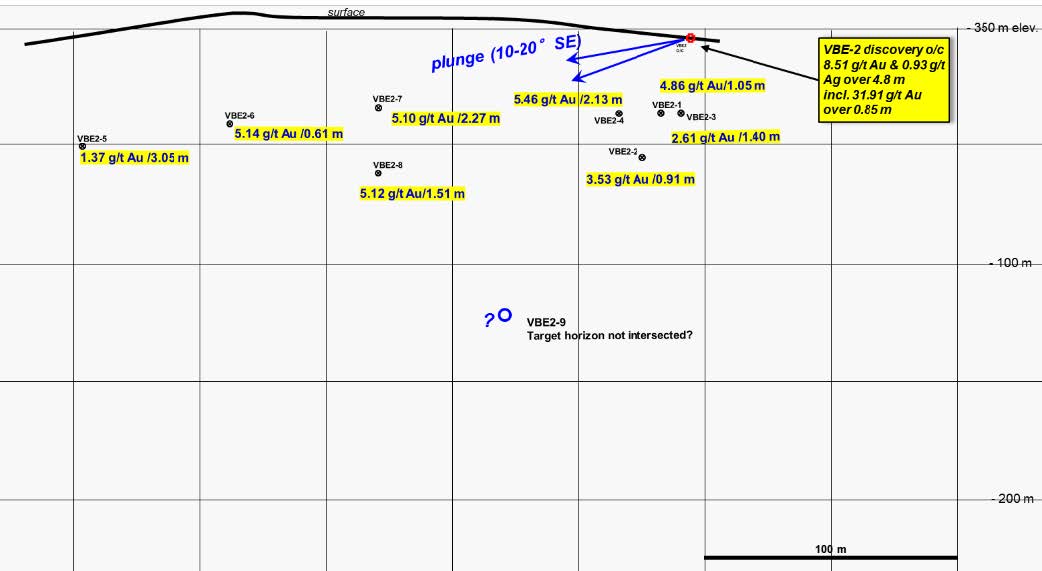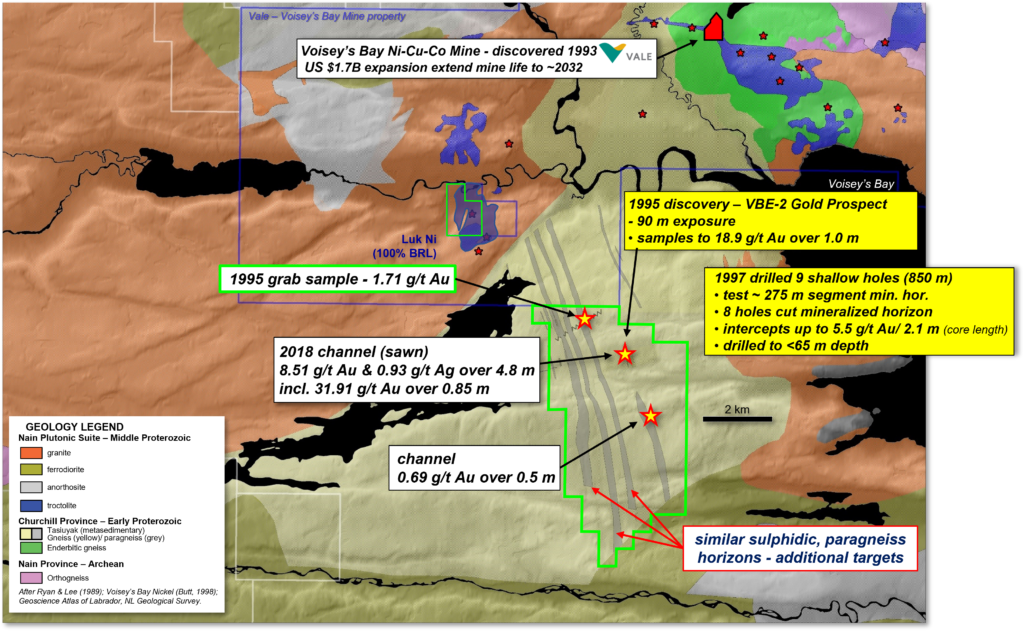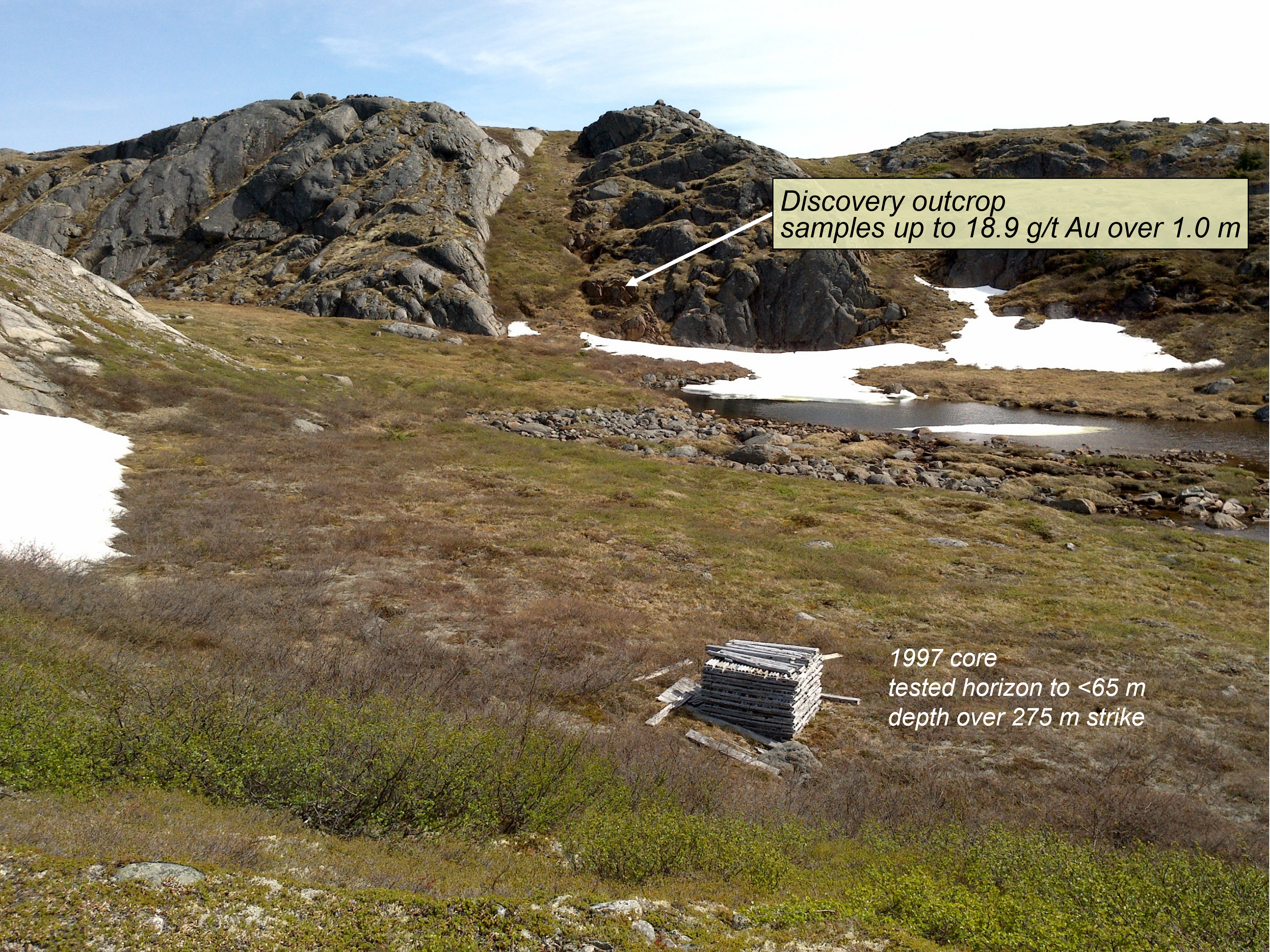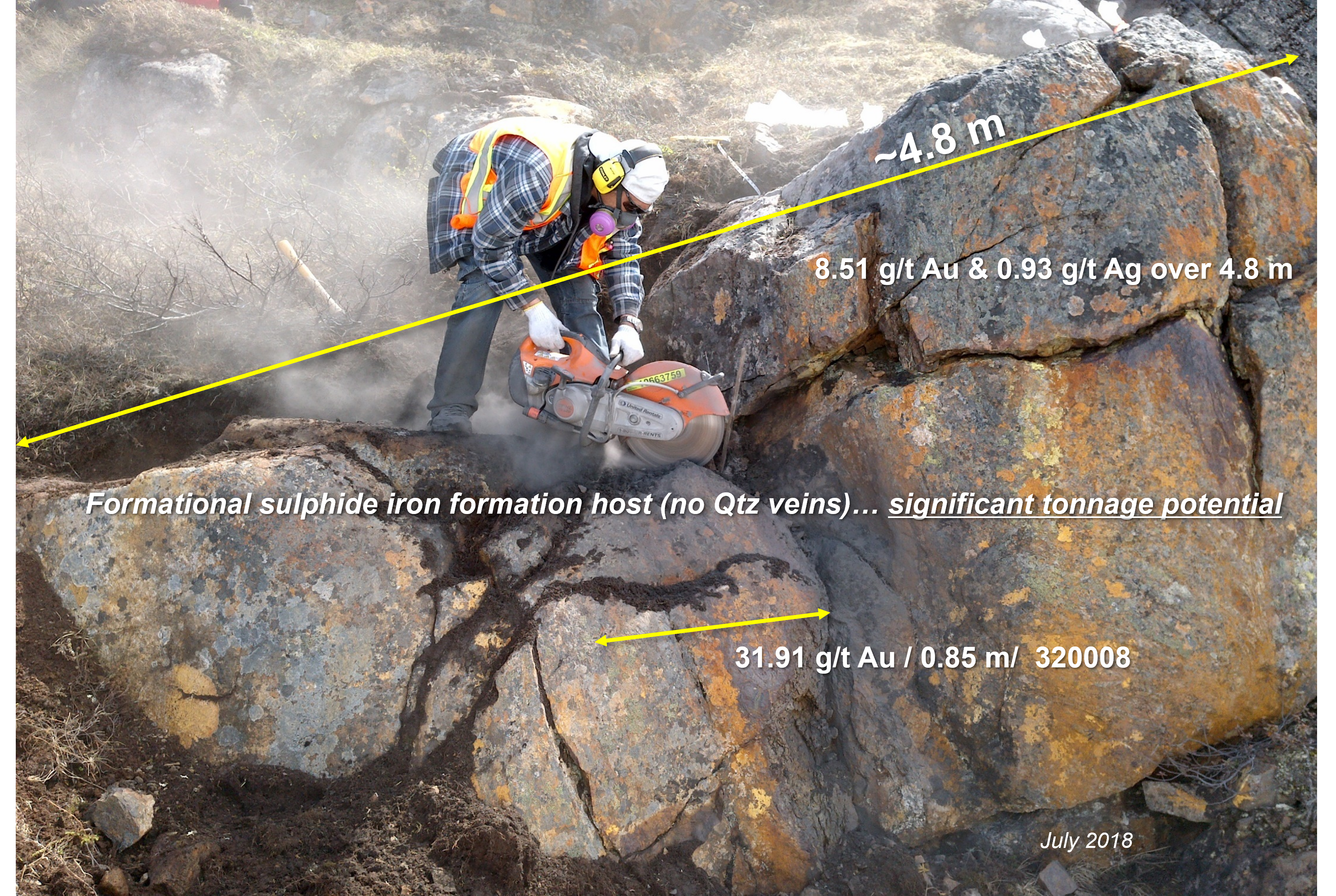Tasiuyak Project
- Location: Newfoundland & Labrador, Canada
- Project Type: Orogenic gold
(Au)
About this Project
Buchans holds a 100% interest in the Tasiuyak gold property in Labrador, located 10 km south of Vale’s Voisey’s Bay nickel-copper-cobalt mine, and includes mineral rights covering the VBE-2 gold prospect discovered by previous explorers during the Voisey’s Bay exploration rush in the mid-1990s.
The Tasiuyak project is a frontier area with almost no prior history of gold exploration and is thought to be prospective for Paleoproterozoic orogenic iron formation-hosted gold as stratabound mineralization hosted by sulphide-rich metamorphic rocks.
In 1997 previous explorers drilled 9 shallow holes – testing the mineralized horizon over a 275 m strike length. Eight of the 9 holes intersected the mineralized horizon, and returned intercepts of up to 5.5 g/t Au over 2.1 m (Canalaska Resources – Geofile 014D/0179). Following the successful exploration program in 1997, further prospecting and exploration efforts were recommended, both north and south along strike of the prospect, but no additional exploration is known to have been conducted at the prospect or elsewhere on the property, prior to Buchans.
Channel sampling of the original discovery outcrop by Buchans in 2018 returned assays of 8.51 g/t Au over 4.8 m, including 21.91 g/t Au over 0.85m. Prospecting along strike traced the horizon 2 km to the south where channel sampling returned assayed of 0.69 g/t over 0.5 m. Other similar sulphidic paragneiss horizons were also recognized and remain to be explored.
Buchans believes the Tasiuyak property covers gold mineralization hosted within a gold-bearing orogenic belt of similar age (~1.8 billion years old) to the former Homestake gold mine and other productive gold bearing orogenic belts around the world. In common with Homestake, Tasiuyak’s gold mineralization is primarily hosted by sulphidic metasediments as opposed to more traditional quartz-vein dominated orogenic gold systems.
Buchans is currently evaluating a plan to increase exploration activities on the property which could commence later this year.
VBE-2 Gold Prospect


The VBE-2 prospect consists of a 90 m long bedrock exposure of sulphide-rich iron formation that originally returned chip samples assaying up to 18.9 g/t Au over 1 m, as well as drilled intercepts over a 275 m strike including 5.5 g/t Au over 2.1 m, 4.2 g/t Au over 3.0 m, and 4.1 g/t over 2.1 m (Figure 10). A field program completed by Buchans in 2018 returned sawn channel samples assaying 8.51 g/t Au & 0.93 g/t Ag over 4.8 m, including 31.91 g/t Au over 0.85 m, and 15.83 g/t Au over 0.65 m. The 2018 program also traced the prospect’s host paragneiss horizon over a 3 km strike returning channel sample assays of up to 0.69 g/t Au over 0.50 m, 2 km south of the main showing (Figure 9).
Buchans believes the Tasiuyak property covers gold mineralization hosted within a gold-bearing orogenic belt of similar age (~1.8 billion years old) to the former Homestake gold mine and other productive gold bearing orogenic belts around the world. In common with Homestake, Tasiuyak’s gold mineralization is primarily hosted by sulphidic metasediments as opposed to more traditional quartz-vein dominated orogenic gold systems.
As the mineralization is hosted by formational sulphide-rich metasedimentary units, Buchans believes this environment holds the potential to host large tonnage deposits and that the Tasiuyak property’s main showing has potential to expand into an important discovery, should additional drilling be undertaken beyond the limits of historical drilling. Historical drilling at the main showing intersected mineralization at shallow depths (<75 m) over a strike of ~250 m and the mineralization is believed to remain open at depth in multiple directions.
Given the early stage of the Tasiuyak mineral property there has been insufficient exploration to define a mineral resource of any size, and it is uncertain if further exploration will result in delineating a mineral resource.
Based on historical drilling and structural mapping, the zone is believed to plunge shallowly to the southeast and the zone remains open down dip and on strike. As mineralization is formational (hosted by a continuous metasedimentary unit of rocks), there is potential to define a large continuous zone at depth.
The zone is currently approximately 250 m long and remains inadequately tested below 65 m depth. Buchans believes the property has potential to yield a significant gold resource with additional drilling.
Qualified Person
P. Moore (M.Sc., P.Geo.) Vice President Exploration of Buchans Resourcres Limited is the Qualified Person for the Company as defined by National Instrument 43-101 and has approved this technical disclosure.







